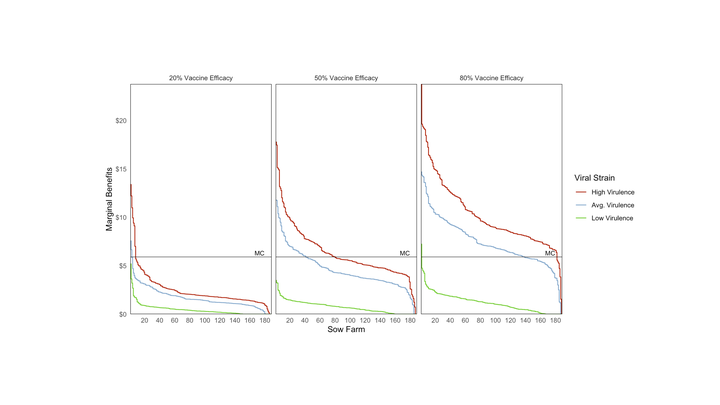Combining epidemiology and economics to assess control of a viral endemic animal disease: Porcine Reproductive and Respiratory Syndrome (PRRS)

Abstract
Porcine reproductive and respiratory syndrome (PRRS) is an extremely contagious disease that causes great damage to the U.S. pork industry. PRRS is not subject to official control in the U.S., but most producers adopt control strategies, including vaccination. However, the PRRS virus mutates frequently, facilitating its ability to infect even vaccinated animals. In this paper we analyze how increased vaccination on sow farms reduces PRRS losses and when vaccination is profitable. We develop a SIR model to simulate the spread of an outbreak between and within swine farms located in a region of Minnesota. Then, we estimate economic losses due to PRRS and calculate the benefits of vaccination. We find that increased vaccination of sow farms increases the private profitability of vaccination, and also transmits positive externalities to farms that do not vaccinate. Although vaccination reduces industry losses, a low to moderate vaccine efficacy implies that large PRRS losses remain, even on vaccinated farms. Our approach provides useful insight into the dynamics of an endemic animal disease and the benefits of different vaccination regimens.